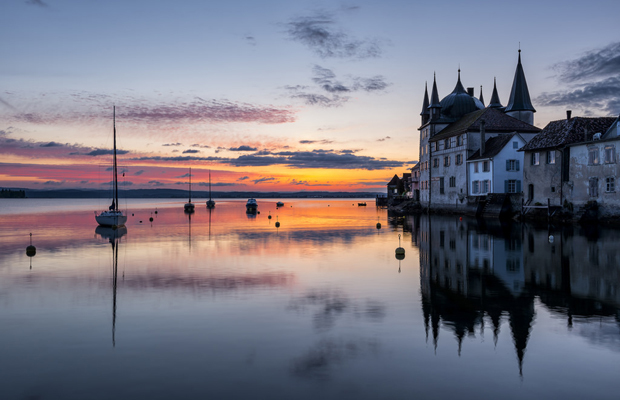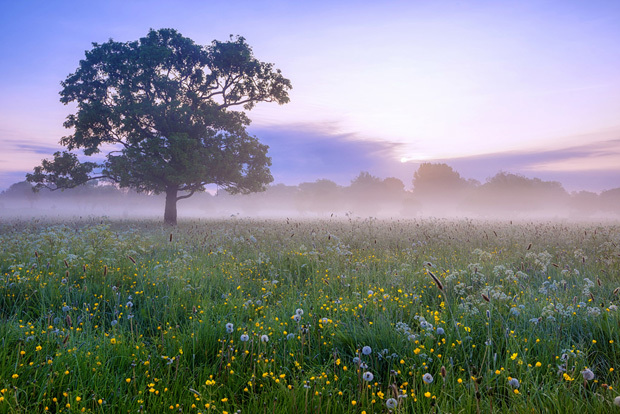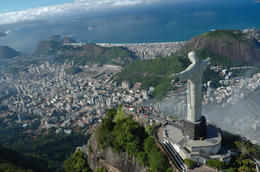Before 1997, the city was part of Quảng Nam-Đà Nẵng Province. On 1 January 1997, Đà Nẵng was separated from Quảng Nam Province to become one of five independent (centrally controlled) municipalities in Vietnam. Đà Nẵng is listed as a first class city,[2] and has a higher urbanization ratio than any of Vietnam's other provinces or centrally governed cities.[3] In terms of urban population, Đà Nẵng is the fifth largest city in Vietnam.[4] Most of the names by which Đà Nẵng has been known make reference to its position at the Hàn River estuary. The city's present name is generally agreed to be a Vietnamese adaptation of the Cham word da nak, which is translated as "opening of a large river".[5][6]
Map of Annam drafted by Alexandre de Rhodes. "Cua han" appears along the coast (upside-down, left of centre). Other Chamic sources, with similar definitions, have been proposed. Inrasara (aka Phú Trạm), a researcher specializing in Champa, suggests Đà Nẵng is a variation of the Cham word daknan (lit. "the large water"); Sakaya (aka Văn Món), another Champa researcher, claims a connection with the Raglai word danang, meaning "river source".[7] Another name given to Đà Nẵng was Cửa Hàn (lit. "mouth of the Han [river]"). The name used by the French, Tourane, is said to derive from this name, by way of a rough transliteration.[8] Notably, this name (spelled "Cua han") appears on maps of the area drafted by Alexandre de Rhodes in 1650. The name Kean (cf. Kẻ Hàn, roughly "Han market") was another name purportedly used during the 17th century to refer to the land situated at the foot of the Hải Vân Pass.[5]
Other names referring to Đà Nẵng include:[5]
Vũng Thùng, a colloquial name which survives in folklore.[nb 1] Trà Úc, Trà Áo, Trà Sơn and Đồng Long Loan, literary names used by Confucian scholars. In Sino-Vietnamese script, used until 1945, "Đà Nẵng" is written as 沱灢. Thái Phiên, a name used briefly after the 1945 August Revolution, commemorating Thái Phiên, the leader of popular revolts during the 1916 Duy Tân Resistance.
History
The city's origins date back to the ancient Champa Kingdom, established in 192 AD. At its peak, the Chams' sphere of influence stretched from Huế to Vũng Tàu. The city of Indrapura, at the site of the modern village of Dong Duong in Quảng Nam Province (about 50 km (31 mi) from Da Nang), was the capital of Champa from about 875 to about 1000 AD. Also in the region of Da Nang were the ancient Cham city of Singhapura ("City of the Lion"), the location of which has been identified with an archeological site in the modern village of Trà Kiệu, and the valley of Mỹ Sơn,[9] where a number of ruined temples and towers can still be viewed.
In the latter half of the 10th century, the kings of Indrapura came into conflict with the Đại Việt, who were then based at Hoa Lư near modern Hanoi.[10] In 982, three ambassadors sent to Champa by King Lê Hoàn of the Đại Việt (founder of the Early Lê Dynasty) were detained in Indrapura. Lê Hoàn decided to go on the offensive, sacking Indrapura and killing the Cham King Parameshvaravarman I. As a result of these setbacks, the Cham eventually abandoned Indrapura around 1000 AD.[11] The Đại Việt campaign against Champa continued into the late 11th century, when the Cham were forced to cede their three northern provinces to the rulers of the Lý Dynasty. Soon afterwards, Vietnamese peasants began moving into the untilled former Cham lands, turning them into rice fields and moving relentlessly southward, delta by delta, along the narrow coastal plain. The southward expansion of Đại Việt (known as Nam Tiến) continued for several centuries, culminating in the annexation of most of the Cham territories by the end of the 15th century.
One of the first Europeans to visit Đà Nẵng was Portuguese explorer António de Faria, who anchored in Đà Nẵng in 1535. Faria was one of the first Westerners to write about the area and, through his influence, Portuguese ships began to call regularly at Hội An, which was then a much more important port than Đà Nẵng.[12] Throughout the 17th and 18th centuries, French and Spanish traders and missionaries regularly made landfall at Hội An, just south of Đà Nẵng. An American, John White, arrived at Da Nang (then called Turon) on 18 June 1819 in the brig Franklin of Salem, Massachusetts, and was advised that the country was recovering from devastating wars, and that what little produce there was had already been promised. Other American ships arriving shortly after were the Marmion of Boston, and the Aurora and Beverly of Salem.[13][14] Conditions were such that they were unable to conduct trade, and the subsequent missions of British East India Company agent John Crawfurd in 1823[15] and the two missions of Andrew Jackson's agent, diplomatist Edmund Roberts, in 1833 and 1836 were unable to secure trade agreements.[13]:pp.19–40 Following the edict of Emperor Minh Mạng in 1835, prohibiting European vessels from making landfall or pursuing trade except at Hàn Port, Đà Nẵng quickly surpassed Hội An, becoming the largest commercial port in the central region.
In 1847, French vessels dispatched by Admiral Cécille bombarded Đà Nẵng, ostensibly on the grounds of alleged persecution of Roman Catholic missionaries. In August 1858, once again ostensibly on the grounds of religious persecution, French troops, led by Admiral Charles Rigault de Genouilly, and under the orders of Napoleon III, landed in Đà Nẵng as part of the punitive Cochinchina Campaign. The French overpowered the Vietnamese stationed in Đà Nẵng, swiftly occupying the city and Tiên Sa peninsula (present-day Sơn Trà peninsula). Despite their initial success, the occupying forces were quickly placed under siege by the Vietnamese army under the command of Nguyễn Tri Phương, and were eventually forced to retreat in March 1860. Conversely, however, the French were able to capture the southern stronghold of Saigon and, in June 1862, several provinces of southern Vietnam were ceded to the French as Cochinchina with the signing of the Treaty of Saigon.
Through two more decades of conflict, the French gradually strengthened their hold on Vietnam, culminating in the establishment of French Indochina (French: Union de l'Indochine Française) in October 1887.[16] Two years later, in 1889, the French colonists renamed the city Tourane, placing it under the control of the Governor General of Indochina.[17] It came to be considered one of Indochina's five major cities, among Hanoi, Saigon–Cholon, Hải Phòng, and Huế.
Geography
Đà Nẵng is the largest city in central Vietnam and one of the country's most important ports. Ringed by mountains on one side and the South China Sea on the other, Đà Nẵng borders Thừa Thiên–Huế Province across the Hải Vân Pass to the north, Quảng Nam Province to the south and west, and the ocean to the east. It is 759 km (472 mi) south of Hanoi, and 960 km (600 mi) north of Hồ Chí Minh City.[20]
Natural disasters
Widespread flooding in Đà Nẵng in the wake of Typhoon Ketsana. Đà Nẵng is susceptible to damage from typhoons that cross into the South China Sea. In 2006, the landfall of Typhoon Xangsane near the city of Huế caused 26 deaths in Đà Nẵng, damaging and destroying homes, downing trees and power lines and flooding major streets.[26][27]
Authorities in Đà Nẵng estimated the damage caused by Xangsane at around US$ 200 million, with more than 5,000 houses washed away, 166,000 homes damaged and 19 boats sunk.[28] Three years later, Typhoon Ketsana made its landfall about 37 miles (60 km) south of Đà Nẵng, again causing widespread flooding. Ketsana left eight people dead and 96 injured in Đà Nẵng, and caused an estimated VND 495 billion (US$25 million) in damage.[29][30]
Shortly after the 2011 Tōhoku earthquake, which triggered a powerful tsunami, the People's Committee of Đà Nẵng approved the installation of 10 early tsunami warning stations throughout the city, the first of their kind in Vietnam. Officials expected the stations would provide at least thirty minutes of warning in case of a tsunami. According to Le Huy Minh, Director of the Earthquake and Tsunami Warning Centre at the Vietnam Institute of Geophysics, a powerful earthquake (≥8 MW) in the waters north of the Philippines could pose a significant danger to the Vietnamese coastline, particularly the area around Đà Nẵng.[31]
Tourism
See also: Hội An and Mỹ Sơn
Gateway leading to Huyen Khong Cave in the Marble Mountains.
Cable car in Bà Nà Mountains The tourism sector is a vital component of Da Nang's economy. Its status as a transportation hub for Central Vietnam and its proximity to several UNESCO World Heritage Sites, including the Imperial City of Huế, the Old Town of Hội An, and the Mỹ Sơn ruins fuels much of its tourist activity.
Mỹ Sơn is an archaeological site dating back more than a thousand years, in Quảng Nam. Located in a remote forested valley some 70 km west of Đà Nẵng, this former capital and religious center of the Champa kingdom once contained in excess of 70 style temples and stupas. Although badly damaged by bombing raids in the 1960s, the site still has more than 20 structures and was declared a UNESCO World Heritage Site in 1999. Many statues, sculptures and reliefs recovered from Mỹ Sơn are kept in the Museum of Cham Sculpture, near the Hàn River in the heart of Đà Nẵng. Dating from the fourth to the 14th centuries, the sensual artwork on these works depicts daily activities as well as Hindu and Buddhist religious themes.
The Marble Mountains are rocky limestone outcrops jutting out of the beach just south of Đà Nẵng. Paths lead to the top of the forested cliffs, affording spectacular views of Non Nuoc Beach and the South China Sea. The caves nestled in the cliffs were originally inhabited by the Cham people. Later, the Nguyễn Dynasty built numerous pagodas among the caves. The Marble Mountains are home to various artisans producing sculpture and artwork at its base at Non Nước Village. Non Nuoc Beach is a white sandy beach on the outskirts of Đà Nẵng is renowned for both its spectacular beauty and for its history as an R&R destination for American troops during the Vietnam War, when it was known as "China Beach".[46][47][48][49] Today, the beach, along with My Khê beach to the north, are home to expensive resorts, surfing and entertainment facilities. Bà Nà Hills is a mountain resort with a 5 km-long cable car system which carries guests up to Bà Nà's peak at 1487m above sea level. Sơn Trà Mountain, just some miles away from downtown with some wild streams and resorts along the seaside.[citation needed]
Hội An
Mỹ Sơn


 l
l



















































